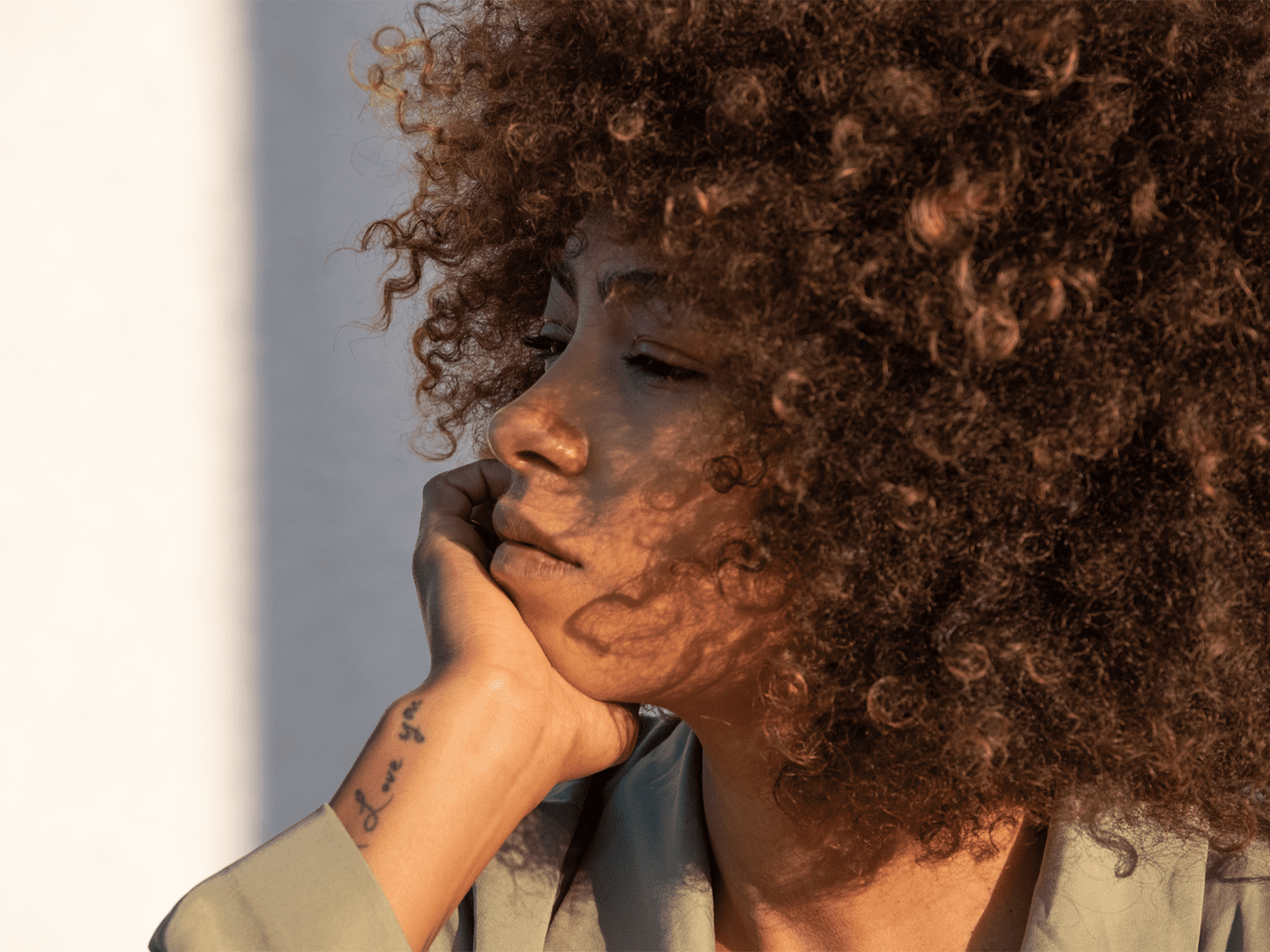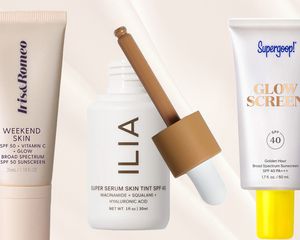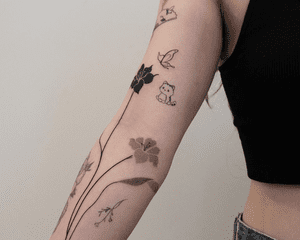
Stocksy
So, you decided you wanted a tattoo and actually followed through with your plan– congratulations! A lot of the time, deciding what type of tattoo to get and picking the right tattoo artist for the job can seem like the hardest part of the process, but tattoo aftercare is just as important.
Think about it: Getting a tattoo involves poking your skin with a needle over and over again, which in turn creates an open wound that will have to heal. To prevent irritation, scarring, itchiness, and scabbing during the healing process, it's important to follow the proper aftercare protocol. Apart from being the safe and smart thing to do, it'll also speed up recovery so that you can flaunt your tattoo as soon as possible.
So, to best understand how to best care for your tattoo right after getting inked, we tapped a board-certified dermatologist and two professional tattoo artists to get all their tips. Happy, healthy, tattooed skin—coming right up!
Meet the Expert
- Chuey Quintanar, is a celebrity tattoo artist and co-founder of Barker Wellness.
- Anar Mikailov, MD, FAAD, is a board-certified dermatologist and co-founder of Skintensive.
- Syd Smith is a micro and fine-line tattoo artist and the owner of Blxck Rose Ink.
1. Leave Your Bandage Alone
Open wounds are breeding grounds for infection—and, as pretty as your new tattoo is, it's a wound. That's why your artist will immediately cover it to keep airborne bacteria and water from touching it. The type of covering your artist will apply can vary, ranging from plastic wrap to skin-like bandages, so the amount of time you'll need to leave it on can vary.
"Generally, you'll want to leave the initial wrap on for about an hour before removing it to change the wrap," tattoo artist, Syd Smith explains. "I've been recommending Mad Rabbit's New Tattoo Repair Patches ($25), which can be left on for up to eight hours a day and used three or four days in a row. However, if you're using a medical grade adhesive, that can stay on for up to three days before having to change it."
2. Adhere to a Gentle Cleansing Routine
Smith recommends waiting at least 24 hours before getting your tattoo wet. Once this grace period is over, use your hand to apply lukewarm water and mild, liquid antibacterial or antimicrobial soap to the area. This will help to gently remove any ointment, blood, and plasma.
Then, pat—don't rub—the area firmly with a clean towel or paper towel to get it completely dry. Follow with a very light application of A&D, Bacitracin, or a similar antibacterial ointment—but not Neosporin. This is a wonderful product for cuts and scrapes but not for tattoos. Many people have allergic reactions to Neosporin, which can cause little red bumps. When the bumps go away, so does the ink, and you can end up with a polka-dotted tattoo.
If you prefer, you also can use a specialty product such as Tattoo Goo's Aftercare Salve ($8). It's petroleum-free and made with herbs and oils to soothe and heal your new tattoo. After that, continue to keep your tattoo clean. After some time has passed, you can use a dye- and fragrance-free lotion when needed instead of ointment to keep the skin soft.
3. Keep Your Skin Hydrated & Protected
To prevent scabbing, irritation, and itchiness, it's important to keep your freshly-inked skin hydrated. "Use products that promote healing and nourish the skin, that are formulated with clean ingredients," recommends celebrity tattoo artist, Chuey Quintanar. "The Tattoo Balm ($22) from Barker Wellness aids in repairing the epidermis post-ink, stimulating the skin’s natural healing process while fighting against free radicals."
4. Be Careful While Showering
Yes, you can (and should!) shower with a new tattoo, but there are a few things to remember. "Use lukewarm water and do not directly soak the tattoo for too long," Smith notes. "You should also avoid scrubbing your tattoo or using harsh soaps as that can irritate healing skin."
And while you may be tempted to take a bath, refrain from doing so. "You don't want to fully submerge your skin in a bath until it's fully healed," dermatologist, Anar Mikailov, MD, says.
5. Avoid Swimming Pools, Hot Tubs, and the Ocean
Avoid swimming—whether in a pool, lake, or the ocean—and submerging your tattoo in a bath or hot tub for two to three weeks, as doing so may cause serious damage. "With hot tubs, pools, or the ocean, it's important to wait until the tattoo is completely healed," Dr. Mikailov points out. "This is different for each person and each tattoo, but usually, it ranges from three to five weeks. You want to minimize any potential to irritate the skin as it's healing, and you also want to avoid introducing any microbes that can potentially cause an infection."
6. Gently Handle Peeling and Scabbing Areas
After a few days, you'll notice some peeling and possibly a little scabbing. Excessive scabbing could indicate a poorly done tattoo, but a little is normal, and there's no need to panic. Smith says the best thing you can do is to avoid picking at the peeling skin or scabs. "Doing that can mess up the healing and even remove some of the ink," she says. "Instead, be gentle and moisturize the tattooed area with a fragrance-free, gentle lotion to soothe any dryness and help your skin heal."
Dr. Mikailov recommends Skintensive's Bruise and Scar Cream ($30) because it "has a very nourishing base and contains arnica extract to reduce swelling and inflammation, coconut oil, and vitamin E, all of which help heal the skin."
7. Protect Your Ink From the Sun
You should always protect a new tattoo from the sun's ultraviolet rays. "UV damage can have a huge impact on new tattoos, as UVA rays, in particular, break down tattoo ink," Dr. Mikailov says. "For a brand new tattoo that has not fully healed, best case scenario, sunburns may prolong the healing time. If you develop a blistering sunburn, however, the tattoo lines can blur, and the ink can change colors. If you are out in the sun with a new tattoo, cover it up with UPF clothing and hats [since you can't wear SPF on brand-new tattoos]."
Once your tattoo is healed, you should apply sunscreen to the area daily. "Fully healed tattoos should be completely protected from the sun as UV damage can cause the ink to fade faster," Dr. Mikailov adds.
8. Keep Skin Moisturized
Dryness can make your tattoo look dull and faded, which is never the goal when it comes to showing off your ink. So, to keep it looking fresh and vibrant, Quintanar recommends using his brand's Tattoo Butter ($22) as "it’s rich in skin-loving emollients, vitamins, phytosterols, and antioxidants for hydrated and nourished skin, that ultimately enhances your body art."
9. Avoid Too Much Exercise
Smith says you may want to avoid excessive physical activity while your tattoo is healing. "Strenuous activities that make you sweat a lot or cause friction on the tattoo can hinder the healing process," she notes. "So take it easy for a little while and give your tattoo the time it needs to heal properly."
The Final Takeaway
Tattoo aftercare is a multi-step process. Immediately following your appointment, you'll want to regularly change your wrap and keep the area as clean and dry as possible (i.e., avoid submerging it in the shower and steer clear of swimming pools). As days pass, you can use light balms and ointments on the area to ensure it heals well. You'll also want to wear UPF clothing to protect your tattoo from UV damage. Our experts agree that following these tips precisely will ensure your ink remains in pristine condition.






